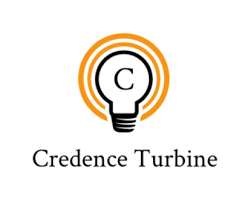The overall reverse logistics market worldwide was valued at US$ 967.89 Bn in 2018 and is set to grow with 5.9% CAGR during the forecast period.
Market Insights
Penetration of e-commerce and growing product recalls in automotive & pharmaceutical industry worldwide, are driving the reverse logistics market growth globally. Reverse logistics refers to the process of operations which leads the product from point of consumption (consumer) to point of origin (manufacturer, distributor, or retailer) for repair, disposal, replacement, refurbishment and other purposes. In 2018, the global e-commerce retail was valued at US$ 2.8 Tn, out of which more than 25% of the products were returned. Simultaneously, over 8% of brick & mortar products are returned every year, thereby driving the reverse logistics market growth worldwide. Product recalls by automotive & pharmaceutical manufacturers, introduction of blockchain technology in logistics and stringent government regulations for e-waste are the other major factors responsible for the growth of reverse logistics market. As a consequence of aforementioned factors, we expect that the global reverse logistics market will show significant growth during the forecast period from 2019-2027.
Browse the full report at https://www.credenceresearch.com/report/reverse-logistics-market
Based on cost incurred type, the reverse logistics market has been divided into three segments: manufacturer, distributor and retailer. Manufacturer segment was the largest value contributor with more than 50% of the market share in 2018. Huge number of product recalls in automotive & pharmaceutical industry and products returns in e-commerce industry are the major reason for growth of the segment. For instance, According to National Highway Traffic Safety Administration, in 2018, manufacturers recalled over 29.3 Mn vehicles in the U.S. alone. In the global pharmaceutical industry around 5% products are recalled by the regulatory & government bodies and around 25% of products are sent for refurbishment annually. Therefore, we expect that the manufacturer segment will continue leading the reverse logistics market throughout the forecast period.
Based on the geography, in 2018, Asia Pacific was the market leader backed by North America and Europe. Asia Pacific accounts for more than 30% of the revenue share in the same year. The regional market growth is attributed to large share in manufacturing industry and growing e-commerce industry in the region. Further, Asia Pacific was the largest e-commerce market with sales of around US$830.0 Bn in 2018. Incorporation of specialized reverse logistics companies in the region is the other major growth factor. China has the largest share in Asia Pacific reverse logistics market owing to its no. 1 position in manufacturing industry with over US$ 2.2 Bn manufacturing output in 2017. Consequently, we expect that Asia Pacific will remain the key contributor in reverse logistics market during the forecast period.
Get sample copy with COVID19 impact analysis: https://www.credenceresearch.com/sample-request/59975
Major market players are developing new strategies such as product launch to increase their market presence. For example, in February 2017, FedEx Corporation’s subsidiary company FedEx supply chain launched FedEx Fulfillment. FedEx Fulfillment will provide e-commerce solutions to medium and small businesses to fulfill orders from different channels such as online marketplaces and websites. FedEx Fulfillment will also help in managing inventory and will provide reverse logistics solutions.
Some of the major companies profiled in the report include Cycleon Netherlands B.V., C.H. Robinson, DB Schenker, FedEx Corporation, Kintetsu World Express, Inc., Reverse Logistics Company, The Deutsche Post AG, United Parcel Service, Yusen Logistics Co., Ltd., Cycleon Netherlands B.V., CEVA Logistics and others.
E-Commerce to be the fastest growing segment
E-commerce industry segment will be the fastest growing segment during the forecast period owing to continually growing e-commerce penetration worldwide. In 2018, there were more than 1.92 Bn e-commerce users globally. The return rate of e-commerce products is around 25% of the global e-commerce sales. E-commerce consumers return the products due to wrong/damaged product received, quality issue, incorrect size and others. Ease of access to e-commerce and convenient product return process are the major growth factors for the segment. Therefore, we expect that the e-commerce segment will be the fastest growing segment in the global reverse logistics market.
Get sample copy with COVID19 impact analysis: https://www.credenceresearch.com/sample-request/59975










